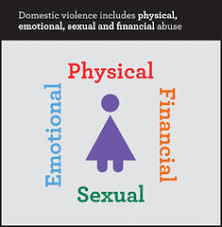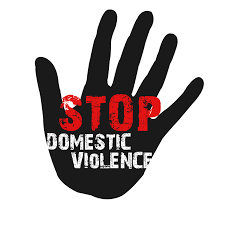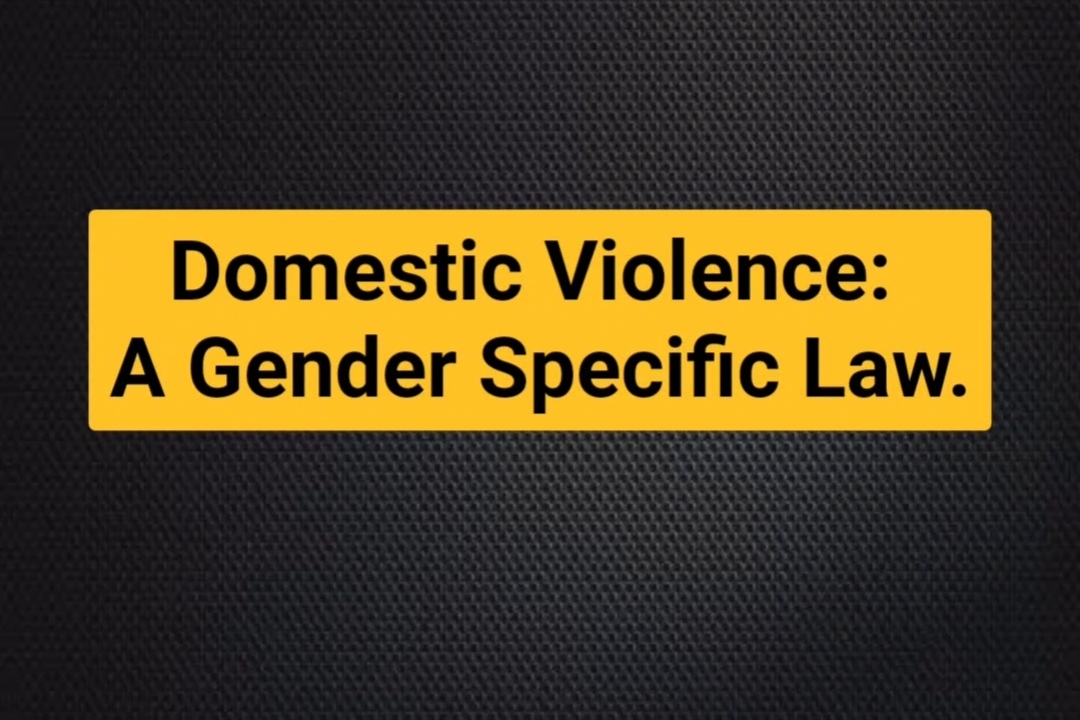This article focuses on domestic violence laws in India. It talks about the women and men movement for the protection of their rights. Further, the author has tried to cover both aspects of domestic violence pertaining to males and females.
Introduction
In India, domestic violence has always been discussed in relation to women. However, due to Socioeconomic changes, its purview is not restricted only to women. Many men are silent victims of domestic violence. In India, 51.5% of males have experienced some sort of torture or violence at the hands of their wives or partners in their lifetime. According to United Nations Population Fund report, in India, 55% of women faced domestic violence by their husbands and in-laws. Today both men and women experienced some sort of domestic violence by their partners. However, such protection laws are gender-biased in India.
History of Domestic Violence in India
The women’s movement in India is traced to the starting of 1970 when the issue of gender roles began to gain power and clarity. However, the women’s movement in India is an old phenomenon, having its roots in the Indian Nationalist Movement, 1920.
The period 1920-70 was heavily influenced and directed by the external economic and political forces of the nation, the outcome was that the women issue was side-lined and never have a central concern. During this period various women’s associations were formed such as Bharat Stree Mahamandal and Arya Mahila Samaj. But these associations were not political in nature, instead of questioning gender roles, they tutored women.
Important questions related to domestic violence against women were started in 1970 in the form of a campaign. When a 16-year-old Maharashtra tribal girl was raped in police custody in 1972. The session court, in 1974, held that Mathura had agreed to have sexual intercourse with the accused. The High Court overturned the acquittal, but in 1979 Supreme Court renewed its ruling because Mathura did not raise her voice and her body did not show signs of resistance.
In India, around 70% of married women face sexual assault. The conservative and orthodox thinking of society who considered women physically and emotionally weaker than man. Delhi Tandoor murder case, 1995 portrayed a horrific event of a woman being burned by her husband in the Tandoor as the man was suspecting that her wife was having affair. The main cause of domestic violence includes, argue with a partner, the desire of a male child, refusal to have sex, Avidness of dowry and there are many others.
In 1980, not only did dowry continue to raise its head, but was also associated with abuse and death in the matrimonial home. In the year 1983 amendment was made in the Indian Penal Code and Section 498-A was added. It was amended after the protest done by mothers of brides who were died due to dowry demands. Women who died at their matrimonial home whether suicide or murder was difficult to decide and this protection of mothers made lawyers think about dowry deaths in India. Section 498-A of IPC talks about cruelty by husbands and relatives. It was very useful for women who were abused for lack of dowry by domestic violence.
Later section 304B was also added which talks about the death of women in marriage home within 7 years of marriage is an offense if it is subject to pre-death, suspicious, and dowry-related cruelty.
The Domestic violence protection of women bill was also passed in 2001, protecting and ensuring the rights of female victims. This bill became an Act in 2005. However, women are not the only victims of domestic violence. With time domestic violence against men has also increased. The men’s rights movement was started in 2000, in Mumbai by activist Rudolph D’Souza (Rudy) a false accusation victim to help other victims from psychological abuse in marriage and false claims of dowry harassment. On 9 March 2005, “Save Indian family Foundation” was formed by the unification of a number of family’s rights organizations across India. And on 19 Nov 2007, Save Indian Family Foundation celebrated International men’s day for the first time in India.
NGO Child Rights and family welfare were formed in 2009 demanding fair laws for men including better child custody and access law. The head of the Ministry of Women and Child Development, Renuka Chowdhury, in 2009 agreed to meet men’s rights activists and listen to their concerns about biased legislation but on 25 July ministry refuse to accept any flaws in current laws. After this many biased laws were criticized by these men’s activist organizations. But till now there is no specific law that deals with men’s rights. Although, Save Indian Family Foundation has launched a helpline number in 2014 for men’s protection.
What is Domestic Violence?

Section 3 of the protection of women from Domestic violence Act, 2005 “define Domestic Violence ” as It states that any act or Omission will qualify as domestic violence if it.
a) Harms or injuries Health, safety, Limbs( body Organ), life or any mental and physical well being of a woman such abuse can be Physical Sexual, economic, verbal or emotional.
b) Harms, Harassed, injure or damage the aggrieved person to pressure her or any of her family members to meet unlawful demands like Dowry.
c) Causes any other Physical and mutual injury to the aggrieved person.
In simple words, Domestic violence is used when there is a close relationship between the wrongdoer and the injured party. Domestic violence can be physical, sexual, or psychological abuse.
Types of Domestic Violence

In the Case, Bhartiben Bipinbhai Tamboli v. the State of Gujrat, types of Domestic violence has been elaborated as:-
-
Physical abuse
Using a physical force against any person due to which they suffer from Bodily injury or hurt. It includes Physical assault, criminal intimidation ( threaten to cause hurt), and criminal force( force used by any person to cause his or her injury ) in form of beating, kicking, punching, threatening while using weapons, forcing her to leave her matrimonial home, hurting children, using physical force in sexual situations, etc.
-
Sexual abuse
It includes when women are forced to perform unwanted, unsafe, or degrading sexual activity. It includes calling her sexual names, hurting her with objects and weapons during sex, and include forced sex by the spouse or intimate partner with whom she has consensual sex.
-
Financial abuse
When a woman is not provided with enough money by her partner to maintain herself and her children. It also includes not allowing women to take up employment. It also includes forcing women out of the house where she lives by not providing rents. It also includes discharge or removing her from movable or immovable assets, valuable shares, securities, and other properties in which she has an interest.
-
Emotional abuse
It includes verbal abuse, such as blaming, isolating, showcasing controlling behavior, insulting and criticizing him or her.
Laws dealing with Domestic Violence
In India, many laws deal with Domestic violence against women but there is no specific law that deals with domestic violence against men. Let’s see what are the laws which deal with women.
Protection of Women against Domestic Violence, 2005

Protection of women against domestic violence Act was passed in 2005. It was enacted to protect women from domestic abuse. In the case Indra Sharma v. V.K.V Sharma, the Supreme Court held that DV Act was enacted for the Protection of women from Domestic violence and to prevent them from being victims of such abusive relationships and to prevent domestic violence in society.
Important Definitions
- Aggrieved Person
Section 2(a) defines an Aggrieved person as a “woman who is or has been in a domestic relationship with the respondent and who claim to have been the victim of any act of domestic violence by the respondent. So any woman who is or has been in a domestic relationship can file complaints. In the case, M. Palani v. Meenakshi, 2008, Court held that application by a woman for maintenance with the men with whom she has shared a closed relationship is maintainable. They also stated that the period they lived together was not necessary. - Domestic Relationship
Section 2(f) defines Domestic relationship, it states that relationships between a person living together sharing a common household. It includes wives, daughter-in-law, sisters in law and widows of any other members of family or blood relationships such as mother, daughter, sister. It also includes adoption, live-in relationships, and women in bigamous relationships or victims of illegal marriage. - Shared Household
Section 2(s) define Shared Household, as where an aggrieved person or a woman lives in a domestic relationship either singly or with the man against whom the complaint has been filed. It includes all kinds of situations such as whether the house is owned by the respondent or it is rented accommodation. It also involves a house jointly owned by the aggrieved person and the respondent or they both singly have come a time, interest right over such property. This Subsection recognized the right of women to reside in a shared household. She can not be thrown out of the house. In case she was thrown out she can be back after obtaining an order from the court.
Who can file a case under the Protection of Women from Domestic Violence Act, 2005
This Act state that a complaint can be filed by the aggrieved person. Section 2 of the Act state that it means a woman who is being in a domestic relationship with the respondent and alleged that he has inflicted domestic violence upon her. A domestic relationship means two-person who lived together or live in a shared household and are related through :
a)Marriage
b)A relationship in the nature of marriage ( e.g.- live-in relationships)
c)Adoption
d)Family Relations
e)Blood Relations
Filing complaint of Domestic violence

To file a domestic violence complaint, an aggrieved woman may file a complaint
- In a police station,
- Or, with a protection officer who will help her filing complaint
- Or, with a service provider
- Or to the Magistrate
Section 8, Protection officer
He is appointed by the State government and he acts as a facilitator between the victim and the court. He helps aggrieved women to file complaints, and applications between magistrates to obtain necessary relief and also assists to obtain medical aid, legal aid, counseling, and other required assistance.
Section 10, Services providers
It includes NGOs, companies, and other organizations working in the field of law and is registered under the law of the state. They are bound to provide assistance and support to women facing domestic violence.
The duties of the Police officer, Protection officer, service providers, and Magistrate are laid down in section 5 of the Act. They have to notify the aggrieved person of their right to obtain relief by way of protecting order, an order for monetary relief, custody order, residence order, an order of compensation, or other order which is provided under this Act.
Supreme court in the case Santosh Bakshi v. the State of Punjab, Held that police has to look into complaints made under DV Act seriously and it can not submit a report that no case is made out without proper investigation, not only from the family members but also from neighbors, friends and other
Which court has the power to decide the Domestic violence case
Section 27 of DV Act provides that, Magistrate of the first-class or metropolitan court shall have the power to grant a protection order and any other orders and try offenses under this Act within the local limit of which
a) Aggrieved person temporarily or permanently resides or carries on business or is employed.
b) the respondent resides or carries on business or employed or
c) where the cause of action arises.
In the case of Shyamlal Devda v. Parimala, the petition under DV Act can be filed in a court where the victim permanently or temporarily resides or carries on business or is employed.
Relief Under DV Act
Section 18-23 provides relief to the aggrieved person.
-
Protection Order
The Magistrate after giving opportunities to both parties of being heard and if satisfied that domestic violence has taken place may pass the protection order and prohibit the respondent to commit any act of domestic violence. It prohibits the respondent to enter places where the victim is employed. Prohibit them to do any form of communication with the aggrieved.
-
Residencial order
If the respondent is distributing the possession of the victim from the shared household whether the respondent has legal rights or not, the court will pass the Residencial order and ask the respondent to remove himself from the shared household. Restraining the respondent or relative to enter into the shared household where the victim resides.
-
Monetary Relief
Under Section 20, the court will pass monetary relief when women have incurred expenditure as a result of the violence. This includes expenses incurred by a woman on obtaining medical treatment, any loss of earnings, and property damage. A woman can claim maintenance from her male partner. Women can also claim maintenance for themselves and their children under Section 125 of CRPC, 1973. Monetary relief should be adequate, fair, reasonable, and consistent with the standard of living to which the aggrieved person is habitual.
-
Custody order
Section 23 deals with the custody order. The court may grant temporary custody order in favor of aggrieved women or any person who is making an application for it. This provision is added to prevent women from being separated from their children which itself is an abusive situation.
-
Compensation order
The Magistrate on the application of aggrieved party can pass an order, directing the respondent to pay compensation and damages for the injuries suffered by the victim, including mental torture and emotional distress caused by an act of domestic violence.
-
Magistrate power to grant interim and ex-party order
The court can pass interim order as it deems just and proper and also if it is satisfied with the application prima facie disclose that the respondent has committed the domestic violence or there is the likelihood that the respondent may commit an act of domestic violence, Court may grant an ex parte order based on the affidavit as prescribed.
Other Laws that deal with domestic violence against women
The Dowry Prohibition Act 1961
This law prohibits Giving or taking dowry. In India, due to dowry, there are many women who commit suicide or are killed by their in-laws. Under this law, if someone takes or even gives dowry will be punishable with imprisonment of 6 months and a fine of up to 5000.
The Word dowry under this Act has been defined as any property or valuable security given or agreed to be given directly or indirectly. This Act put a ban of any advertisements in any newspaper or any journal or through any other medium or a share in the property, business, money, etc by any person in consideration for marriage shall be punished with imprisonment and fine.
According to section 7 of the Act, a judge below the rank of a metropolitan Magistrate or Magistrate of first-class shall have the power to try an offense under this Act. The court will take cognizance of the offense only on the report of the victim or her family, police report, or on its own knowledge.
Section 304 B of IPC
It talks about Dowry death. When the death of the woman is caused by any burns or bodily injury or occur other than normal circumstance, within the seven-year of marriage and it is shown that she was subjective to cruelty or domestic violence by her husband and in-laws, with connections to Dowry demand will be considered as Dowry death. And is punishable under the law.
Section 498 A of IPC
It talks about Harassment for Dowry by the husband or his family is considered a crime. This Harassment can either be physical or mental. In India, Marital Rape is not recognized as a crime. However, forced sex with a wife is considered cruelty.
Laws dealing with domestic violence against men
Man’s are also the victim of domestic violence. In our country Domestic law only protects women and not men. It gives false anticipation that man can not be a victim. And day by day domestic violence against men is gradually increasing. And therefore, the law should also change with time. Man’s are harassed by women by filing false rape, Dowry, or molestation cases.
Type of violence against men
- Physical violence: It includes slapping, pushing, or hitting my wife and her relatives. Slapping was found as the most common form of physical violence against men.
- Physiological violence: Emotional violence, 85% abuse against the men was criticism, 29.7% were humiliated in front of others, and 3.5% were threatened or hurt. It can also be in the form of mental abuse such as constant threats to the husband and his family under false allegations of dowry and domestic violence.
- Sexual abuse: This happens when the husband denies sexual intercourse. According to reports, 0.4% male has experienced sexual violence.
In India DV Act is considered Gender neutral. The judgment of Karnataka High Court in the case Mohammed Zakir v. Smt. Shanna, Court remarked that male petitioner can also invoke provisions of DV Act and Court would have to entertain the petition.
There is no specific section or law which deals with domestic violence towards men. Even the scope of the DV Act is not clear. But man takes a defense under these sections as mentioned below. If women file the case of cruelty against the husband under Section 498-A then the only option left with the husband is either defend himself by giving evidence or file a counter case under Section 120 B of IPC, that wife is conspiring to commit a crime against him and his family. He can also file a case under Sec 500 of IPC Defamation. He can file a complaint under 506 of IPC that his wife threatened him to hurt him or his family or property.
Landmark cased of Domestic violence
Hiral P. Harsora v. Kusum Narottamdas Harsora
The Supreme Court has struck down the portion of 2 (a) which defines “Aggrieved person” on the ground of violation of article 14 of the Indian constitution and the word “Adult male” in section 2(q)of the DV Act was also deleted by the court. It means any person whether male or female who is facing violence can file a complaint.
INDIRA SARMA vs VKV SARMA
The Supreme Court held that not all living relationships will be considered as relationships in the nature of marriage. The court has put down the guidelines for testing the concept of living in a relationship.
- Duration of relationship
- Shared household
- Pooling of resources and financial arrangements
- Domestic arrangements
- Sexual relationship
- Children
- Socialization in public
- Intention and conduct of the parties.
V.D. BHANOT vs. SAVITA BAHNOT
A wife who has shared the household before DV Act has come into force will be entitled to the protection of Domestic violence.
LALITA TOPPO vs. STATE OF JHARKHAND & ANR
In this Supreme Court held that maintenance can be claimed under the provisions of DV Act, even if the claimant is not the legally wedded wife but can not claim maintenance Under 125 of CRPC.
Sabita Mark Burges vs Mark Lionel Burges
In this case Bombay high court has passed the Residencial order under Section19(1)(b). Directing respondent to remove himself from the shared household. The court further states that it doesn’t matter the respondent has alone owned a particular house or not, he has no right to be violent against his wife or any woman he is living with and if the court sees any violence he must be restrained from entering upon the residence.
Current Scenario
During covid 19, the domestic violence cases have been increased in India. After 24 March 2020, when the lockdown was announced by the government the cases of domestic violence have also been increased 100% according to the National women’s commission. Data which is shared by NCW was very alarming. Domestic violence complaints received by NCW in Jan 2020 was 538, in Feb it was 523, March 501, April 377, and in May and June, it was 730. If we talk about men 52.4 % of men faced gender bases violence. Out of 1000 males, 51.5% experienced domestic violence by their wives or intimate partner.
Conclusion
In recent times with modernization, westernization, Social value and culture have been changed. Today both men and women are working and both are managing their homes with equal contributions to their income. Men have now opened up about domestic violence they faced and now they have started sharing their pain, agony. They are no longer stronger than women. It is high time that the law also recognized their problems and make changes in law and make separate laws for them.
FAQs
Who has the Power to Provide Protection Order Under Domestic Violence Act?
Ans. Section 27 of DV Act provides that, Magistrate of the first-class or metropolitan court shall have the power to provide a protection order or any other orders and try offenses.
Can a male invoke the provision of the Domestic Violence Act?
Ans. In Mohammed Zakir v. Smt. Shanna, the Court remarked that male petitioners can also invoke provisions of the DV Act and the Court would have to entertain the petition.
Can a woman who is in a live-in relationship claim maintenance and sue his partner for domestic violence under the Domestic violence Act?
Ans. An unmarried woman who is in a live-in relationship can claim maintenance and also sue his partner under the Domestic violence Act.
Name the commission that works for women’s rights and protection?
Ans. National commission for women.
Through which amendment act Section 489-A was added in the Indian Penal Code?
Ans. Section 498-A was added through the Criminal Amendment Act of 1983.
